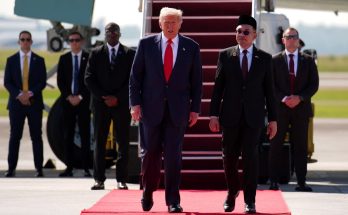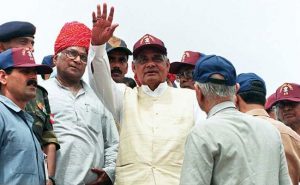
Taking risks and pushing the envelope, but always keeping India’s vital interests centre-stage, was the hallmark of Vajpayee’s foreign policy. It is this multi-dimensional diplomacy that will sustain and nourish India’s ascent to the global stage….
Atal Bihari Vajpayee, India’s universally respected and loved statesman-philosopher-poet, now has countless admirers. We do not know whether the artificial lines on the political map matter to the departed souls, but knowing Vajpayee’s fierce and unrelenting love for India, he could nurture some pride to the country’s ascending global profile and its growing indispensability to an increasingly complex and conflicted world. This may sound like inspired nationalistic spiel to some cynics, but for Vajpayee, making India count on the global stage was his consuming passion and a singular achievement.
Navigating the world
A man of many parts, Vajpayee was a natural navigator in a world driven by geo-political rivalries and fault-lines. Politics was his vocation and poetry his enduring love, but it was in the area of foreign policy that his genius shone and found its true metier. He loved traversing geographies and cultures, near and distant, and meeting world leaders, making a lasting impress wherever he went. Making a case for India and making his country count amid competitive power politics — these were the twin motifs that framed his multifarious engagements in whatever role he was playing at that point in time: MP, Foreign Minister, Leader of Opposition or Prime Minister.
He became the first Indian leader to deliver speech in Hindi before the UNGA and played an instrumental role in defeating Pakistan’s propaganda machinery as the leader of the multi-party delegation sent to the Human Rights Council in Geneva in 1994. His clear-eyed logic, reasonableness and eloquence, blended with sincerity, charm and charisma, swung India’s case in the most trying circumstances.
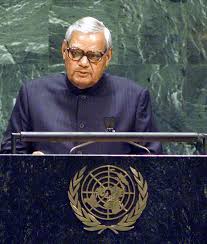
Transformational diplomacy
Vajpayee’s foreign policy legacy can be encapsulated in the transformative initiatives he launched vis-à-vis India’s relationship with three major power centres — the US, China and Russia — and his bold, albeit thwarted gamble in seeking peace with the perennially estranged Pakistan.
The crowning moment in his foreign policy resume was his audacious move to go nuclear in the summer of 1998. Vajpayee was visionary in finally acting upon the much-debated ‘go nuclear’ decision, which was hitherto mired in endless visions and revisions. He acted like a cool calculating pragmatist in riding out global opprobrium and punitive sanctions from the self-regarding nuclear oligarchy. With that masterstroke in Pokhran, he shattered the systemic hypocrisy that underpinned the edifice of the Nuclear Non-Proliferation Treaty, a discriminatory instrument of exclusion, designed to divide the world into the nuclear haves and have-nots. In the face of Western sanctions, he did not bow or implore, but relentlessly argued India’s case with precision, patience and eloquence.
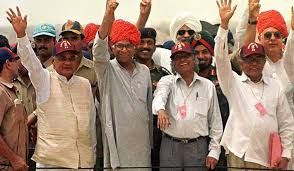
“Sanctions cannot and will not hurt us. India will not be cowed down by any such threats and punitive steps. India has the sanction of its own past glory and future vision to become strong — in every sense of the term.” Vajpayee’s in-born conviction in India’s destiny as a global player paid off.
After a brief interregnum of hostility, the world’s powers-that-be relented and began the process of building bridges with a newly nuclear-empowered India. The high-stake nuclear gambit was vindicated when the US showed signs of making up, with President Bill Clinton visiting India in March 2000, followed by an invitation to Vajpayee to visit the US.

In June 2000, Vajpayee addressed the joint session of the US Congress, in which he famously described the India-US ties as “a natural partnership of shared endeavours.” This was followed by a prolonged and tortuous process of nuclear rapprochement, which culminated in the landmark India-US nuclear deal in the summer of 2015. In a tribute to Vajpayee’s far-sighted diplomacy, 20 years after India conducted nuclear tests, India is now part of three multilateral nuclear export regimes, including MTCR, Australia Group and the Wassenaar Arrangement, a sterling achievement the Narendra Modi Government carved on the solid foundation of Vajpayee’s legacy. The next big move in India’s ongoing process of nuclear rapprochement is the NSG — it is but a matter of time as global opinion is now weighed in favour of India and if China were to relent, India will be inside the NSG tent tomorrow. The continued transformation of India-US relationship and its liberation from hesitations of history, ably carried forward by successive regimes, is a concretisation of Vajpayee’s foreign policy legacy. Looking at the current trajectory of India-US relations and India’s elevation as the US’ Major Defence Partner, not many remember that it was a fraught battle of wits for Vajpayee, who had to bear the onslaught of the Left and Right, as he set this vital relationship on an upward trajectory by describing India and US as “natural allies.”
Peace with China
The gifted globalist that Vajpayee was, he showed a similar foresight in making a fresh beginning with China, an emerging power which was beginning to manifest global ambitions. Contrary to the dominant narrative of India and China as rivals and enemies, Vajpayee realised early on that continuing adversarial relations with India’s largest neighbour will not be conducive to India’s rise. Acting on this conviction, he became India’s first Foreign Minister to visit China after Pandit Nehru in 1979 and proposed the idea of Special Representatives (SR) mechanism to resolve the boundary dispute. This innovative idea finally fructified more than two decades later in 2003 during Vajpayee’s landmark visit to China.
This risk-taking diplomacy of moving beyond the comfort zone to seek entente with India’s most potent external challenge and opportunity is now being reflected in current initiatives like the much-talked about “Wuhan reset” to forge a new vocabulary of collaborative relations that focuses more on opportunities rather than what divides the two Asian giants. Fittingly, China’s Premier Li Keqiang has lauded Vajpayee as “an outstanding statesman who made outstanding contribution to Sino-Indian relations.”
Multi-alignment in multipolar world
In a mutating world order with shifting power equations, Vajpayee displayed dexterity and determination to optimise India’s prospects by recalibrating relations with other major power centres. Old and trusted relationships were revitalised and renewed under his watch. Vajpayee put the time-tested India-Russia relationship on a new footing by forging strategic partnership and launching the annual summit process between leaders of the two countries.
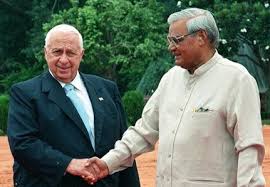
Moving away from the restrictive worldview of Non-Alignment, Vajpayee forged a new paradigm of multi-alignment in foreign relations, which essentially translated into seeking stronger relations with contrarian partners. In sync with this new paradigm, Vajpayee ushered in a new phase in India-Israel relations by inviting Israeli Prime Minister Ariel Sharon to India in 2003. In the same year, Vajpayee sprang a surprise by hosting Iranian President Mohammad Khatami in New Delhi. This uncanny ability to forge and nurture relations with diverse power centres, which are often at odds with each other, without getting bogged down in zero sum games, infused a new dynamism in India’s foreign policy calculus.
Risk-taking diplomacy
Last but not the least, Vajpayee’s trademark foreign policy posture of risk-taking — a careful blend of idealism and real-politick — was reflected in his sincere overtures towards Pakistan. Pakistan, with its congenitally India-hating military establishment, repeatedly betrayed his hopes for a peaceful periphery — his Lahore bus yatra was followed by back-stabbing in the form of the Kargil war. This duplicity disappointed Vajpayee, but did not deter his never-say-die spirit as he reached out to Pervez Musharraf, the architect of Kargil, in Agra. The summit collapsed, but Vajpayee persevered and defied diplomatic orthodoxy by visiting Islamabad for the SAARC summit in 2004, paving the way for resumption of India-Pakistan dialogue. As a new regime takes charge in Islamabad, Pakistan’s new Prime Minister Imran Khan has invoked the Vajpayee legacy to build better relations with India. Given the current atmosphere of pessimism and going by many betrayals in the past, India will probably wait and watch before taking the plunge. But if Vajpayee were alive today, he would have tried once again, assured in the belief that India can’t be stopped by the machinations of a self-serving military elite in a neighbouring country.
Risk-taking and pushing the envelope, but always keeping India’s vital national interests in the centrestage, was the hallmark of Vajpayee’s foreign policy, and it is this creative multi-dimensional diplomacy that will sustain and nourish India’s ongoing ascent as a new smart power on the global stage.
(Manish Chand is Editor-in-Chief of India and World magazine and India Writes Network. He is Founder-CEO of TGII Media Private Limited, a media, publishing and research/consultancy company)

Author Profile

- Manish Chand is Founder and Editor-in-Chief of India Writes Network (www.indiawrites.org) and India and World, a pioneering magazine focused on international affairs. He is CEO, Centre for Global India Insights, an India-based think tank focused on global affairs.
Latest entries
 India and the WorldOctober 27, 2025Modi hails the century of India and ASEAN, backs ASEAN centrality
India and the WorldOctober 27, 2025Modi hails the century of India and ASEAN, backs ASEAN centrality India and the WorldOctober 26, 2025Act East: Five reasons why ASEAN summit in Malaysia matters
India and the WorldOctober 26, 2025Act East: Five reasons why ASEAN summit in Malaysia matters India and the WorldOctober 25, 2025Malaysia Summit: India can play a bigger role in ASEAN: Anil Wadhwa
India and the WorldOctober 25, 2025Malaysia Summit: India can play a bigger role in ASEAN: Anil Wadhwa India and the WorldOctober 2, 2025With US frowning, India to host Putin in December
India and the WorldOctober 2, 2025With US frowning, India to host Putin in December






